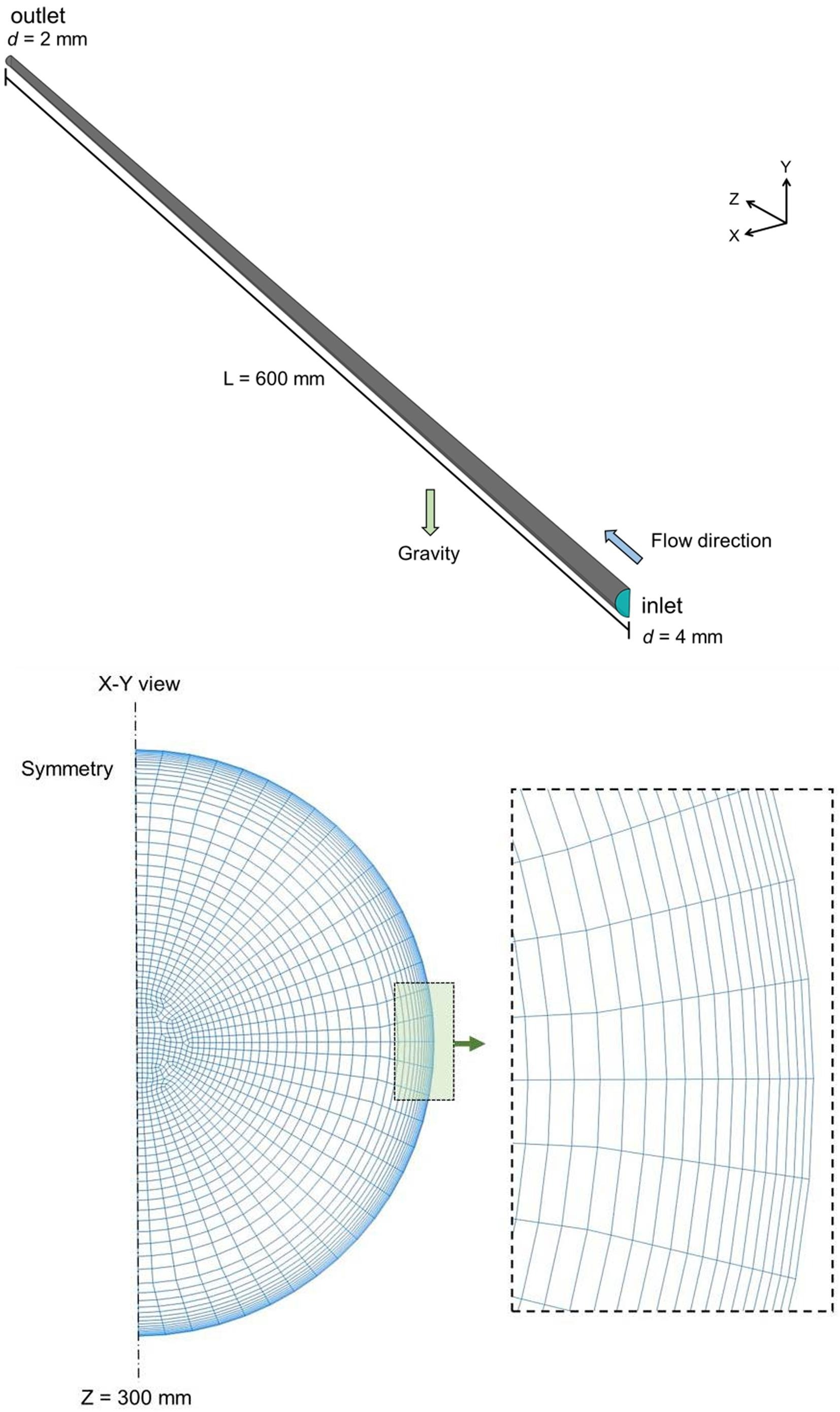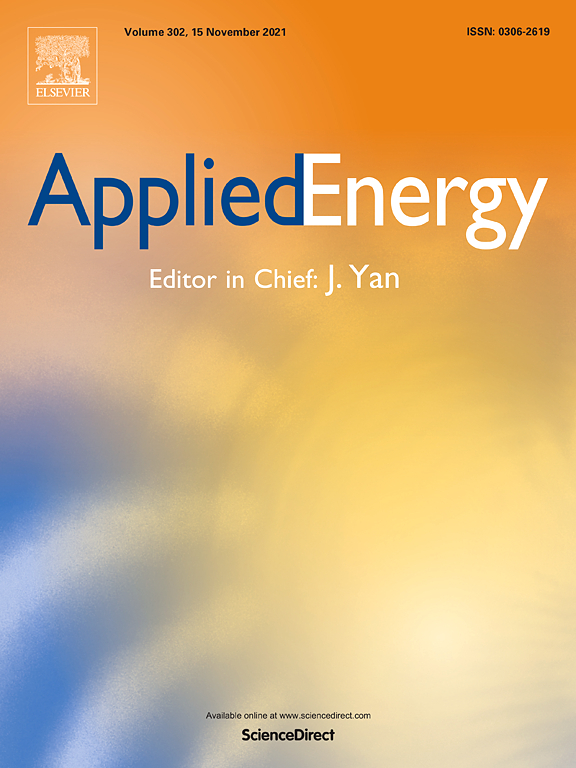Heat transfer and pressure drop of film condensation in a horizontal minitube for HFO1234yf refrigerant
The objective of the present research is to investigate the two-phase flow behavior of a condensed minitube for HFO1234yf refrigerant.

Fig. 1. Schematics of a symmetric 3D geometric domain and numerical grids.
Technology Overview
Condensation sequences of HFO1234yf in straight and convergent tubes are explored. We simulate condensate films to resolve thermal and frictional characteristics. Convergent design realizes heat transfer coefficient of 12.3 kW/m2 K at 800 kg/m2 s. Empirical correlations of heat transfer coefficient and pressure drop are tested. Dobson-Chato, Huang, Freidel correlations suitably estimate thermo-friction factors.
Applications & Benefits
This research can serve as a reference for designs that incorporate cultural differences or integrate physical and virtual components. Since the content development and interactive design at temples as cultural tourism destinations can be beneficial to the overall design and interactive design literature, this study can facilitate the research and development of human–computer design and universal design and broaden the scope of research in this field. Integrating culture, tourism, modern technology, and gaming in kiosk design can serve as a reference for the development of tourism design as well as for related industries.
Abstract:
This paper applies the computational fluid dynamics (CFD) simulation to study the condensate two-phase thermofluid characteristics of refrigerant HFO-1234yf flowing through horizontal straight and convergent passages for guiding the design of minitube heat exchangers. The theoretical analysis employs the volume-of-fluid (VOF) method to model the progression of film condensation process for determining the distributions of velocity, pressure, temperature, vapor volume fraction and film thickness for liquid-vapor interfacial flows. The Lee model is formulated as a user defined function to treat the phase change effect at the interface. The predictions of heat transfer coefficients and pressure drops agree reasonably well with the measured data from the referencing literature at the mass and heat fluxes of 200–800 kg/m2 s and 9.9–24.3 kW/m2 for validation of the computational model. The simulated results are presented to capture the complex two-phase flow behaviors during the film condensation progression, including the formation of interfacial ripples of annular films, wave-shaped films with elongated necking regions, shedding of liquid ligaments and breakup of these ligaments entrained into the vapor core. The VOF calculations also estimate the average heat transfer coefficient and pressure drop up to 11.3 kW/m2 K and 55.1 kPa at a mass flux of 800 kg/m2 s for the straight tube, showing similar thermal performance to refrigerant HFC-134a reported by open literature. The convergent passage essentially raises the average heat transfer coefficient and pressure drop because of more severe shear stresses over the film surface. The correlations of heat transfer coefficient and pressure drop are compared with CFD predictions for straight and convergent tubes. The performance assessment is thus conducted using the validated correlations to guide the redesign of minitube heat exchangers with HFO1234yf as an alternative refrigerant in various energy systems. Two design changes are presented using HFO1234yf refrigerant to enlarge the total surface area up to 13.49% in straight tubes or broaden the cooling surface area of only 6.4% in convergent tubes for matching the performance of R134a.

Heat transfer and pressure drop of film condensation in a horizontal minitube for HFO1234yf refrigerant
Author:Lee Y.-T., Hong S., Chien L.-H., Lin C.-J., Yang A.-S.
Year:2020
Source publication:Applied Energy Volume 274, 15 September 2020, 115183
Subfield Highest percentage:99% Building and Construction #1/185
https://www.sciencedirect.com/science/article/pii/S0306261920306954
